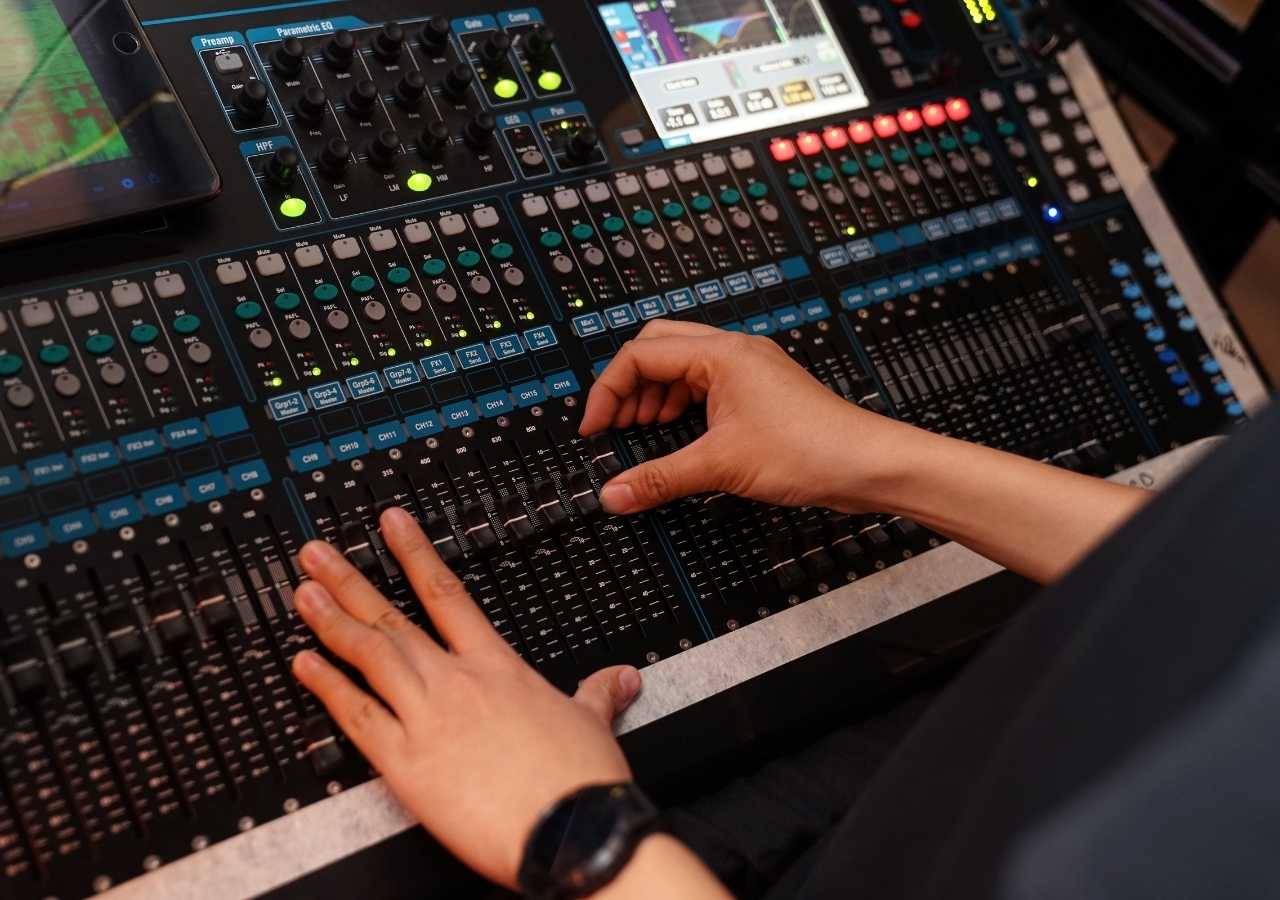Electronic Dance Music has evolved a lot in recent years, and technology now gives artists powerful tools to turn ideas into polished tracks. Whether you're producing from your bedroom or have years of experience, modern AI tools make it possible to create professional-sounding EDM without extensive training.
This guide will show you how to use AI to speed up your workflow, taking your ideas from a simple spark to a finished track ready for streaming or live performance.
Understanding AI-Generated EDM
AI-generated EDM relies on machine learning models trained on thousands of electronic tracks. These systems analyze patterns in rhythm, melody, harmony, and structure to produce compositions that feel true to the genre while offering fresh variations.
AI can understand key EDM elements like four-on-the-floor kick patterns, build-ups, drops, and the energy flow that keeps dancers moving. Advanced AI tools can produce everything from MIDI sketches to full instrumental arrangements with realistic synthesizer sounds.
Modern AI generators are built to capture the structure that makes EDM work: tension-filled intros, euphoric breakdowns, crushing drops, and smooth transitions that maintain momentum across the track.
Why AI Fits EDM So Well
EDM's predictable arrangements make it an ideal genre for AI to work with.
- Predictable Structure: Tracks usually follow intro → build-up → drop → breakdown → build-up → drop → outro. AI can grasp this framework quickly.
- Repetition with Variation: Loops and motifs make it easy for AI to generate compelling material while keeping the track interesting.
- Digital Foundation: Since EDM is fully electronic, AI can focus on synthesized sounds without simulating acoustic instruments.
- Steady Tempo: EDM's typical 120–140 BPM gives AI a reliable rhythmic base to build upon.
Step-by-Step AI EDM Workflow
Step 1: Choose a Subgenre and Define Your Parameters
Decide on the style and mood of your track. Some EDM genres that work well with AI include:
- Big Room House: Massive festival drops, minimal melodies
- Future Bass: Emotional chord progressions, vocal chops
- Progressive House: Smooth transitions, uplifting builds
- Techno: Driving basslines, hypnotic grooves
- Dubstep: Heavy drops with intricate sound design
Set your production details clearly:
- BPM: 120–140
- Key: Minor for emotional depth, major for brightness
- Mood: Euphoric, dark, energetic, or dreamy
- Instruments: Supersaws, 808 drums, vocal chops, pads
Step 2: Generate Your Foundation with AI
Feed your AI tool a detailed prompt, combining genre, tempo, mood, and structure. For example:
"128 BPM progressive house track with uplifting major chord progressions, punchy kick drums, and euphoric synth leads building to powerful drops."
AI can generate a range of ideas quickly, giving you the freedom to experiment before committing to a final direction.
Step 3: Arrange and Structure Your Track
Import your AI-generated stems into a DAW. Focus on dynamic flow:
- Intro (0–32 bars): Set the groove with minimal elements
- Build-up (32–64 bars): Layer sounds to build tension
- Drop (64–96 bars): Full-energy hook
- Breakdown (96–128 bars): Strip back to emotional elements
- Second Build-up (128–160 bars): Rebuild tension with variation
- Final Drop (160–192 bars): Deliver climactic energy
- Outro (192–224 bars): Wind down smoothly
Step 4: Add Complementary Elements
Enhance your AI foundation:
- Risers and sweeps for smooth transitions
- Impact sounds to accent section changes
- Percussion fills to maintain rhythmic interest
- Pads for emotional depth
- Vocal chops or samples for a human touch
AI can help generate these elements, but manual adjustment makes your track feel unique.
Step 5: Mixing and Mastering
To reach professional quality:
- EQ: Give each element its space
- Compression: Balance dynamics without losing punch
- Sidechain: Create classic EDM pumping with the kick
- Stereo Imaging: Widen synths, center bass
- Effects: Reverb, delay, and modulation for depth
Consider AI-assisted mastering to achieve commercial loudness and polish.
Recommended AI Tools
EaseUS AI Music Generator
EaseUS offers an intuitive platform specifically designed for electronic music creation. Its EDM-focused algorithms understand genre conventions while providing enough customization to maintain creativity. The tool excels at generating professional-quality stems and MIDI data that integrate seamlessly with popular DAWs.
Suno AI
Excellent for generating full arrangements with vocals, Suno AI handles complex EDM structures effectively. Its strength lies in creating cohesive tracks that sound naturally arranged rather than artificially constructed.
Soundraw
Provides extensive customization options for EDM production, allowing fine-tuned control over generated elements. Particularly strong for creating royalty-free tracks suitable for commercial use.
UDIO
Specializes in realistic instrumental generation with excellent sound quality. Ideal for producers who need high-fidelity stems for professional releases.
Pro Tips for Better AI EDM
Prompt Engineering for Better Results
Getting the best output from AI starts with crafting detailed prompts. Be specific about:
- Genre and Subgenre: Use "Future Bass" instead of just "EDM."
- Energy Level: Specify whether it's a "high-energy festival anthem" or a "chill downtempo" track.
- Instrumentation: Include details like "supersaw lead, sub bass, trap-style snares."
- Structure Hints: Suggest arrangements, e.g., "with epic buildup and massive drop."
- Reference Points: You can mention style influences, like "in the style of modern progressive house."
Iterative Refinement Process
Don't settle for the first AI output. Use its speed to explore multiple possibilities:
- Generate 5–10 versions of your core idea.
- Pick the strongest elements from each version.
- Use "remix" or "variation" prompts to refine and explore alternatives.
- Combine the best parts manually in your DAW to craft the final track.
Maintaining Human Creativity
AI can generate ideas, but your creativity makes them memorable:
- Arrangement Decisions: Decide when and how elements enter or exit.
- Sound Design Choices: Shape your style with effects and processing.
- Emotional Arc: Build tension and release that connects with listeners.
- Unique Flourishes: Add signature sounds or patterns that make the track yours.
Quality Control and Finishing
Even the best AI output needs human refinement:
- Timing Adjustments: Fine-tune micro-timing for groove and feel.
- Dynamic Variation: Avoid monotonous sections by varying intensity.
- Transition Smoothness: Ensure flows between sections are seamless.
- Mix Balance: Achieve professional loudness and clear frequency distribution.
Legal and Ethical Considerations
Before releasing AI-generated music commercially, keep these in mind:
- Copyright Ownership: Tracks made solely by AI may have limited copyright protection. Adding human creative input strengthens your rights.
- Commercial Licensing: Check that your AI platform allows commercial use; some require attribution or have limits.
- Sample Clearance: Make sure your AI tool's training data doesn't replicate copyrighted material.
- Transparency: Consider disclosing AI assistance in your credits, as industry standards for AI attribution are evolving.
Overcoming Common AI Challenges
- Generic Output: Use highly specific prompts and combine multiple AI generations.
- Transitions: Manually add risers, fills, and automation for smoother energy flow.
- Mix Quality: Apply gain staging, reference tracks, and professional plugins. Master professionally if needed.
The Future of AI in EDM
AI is evolving fast:
- Real-time generation for live performance
- Style transfer between subgenres
- Interactive AI collaboration suggesting improvements
- AI-generated custom synth presets and effects
These tools increasingly handle technical tasks, letting producers focus on artistic decisions.
Start Your AI EDM Journey Today
AI makes professional EDM accessible to anyone with a creative vision. Combine AI generation with your unique style, experiment with prompts, and refine your tracks manually. Start with EaseUS AI Music Generator and see how AI can turn your ideas into high-quality electronic music that moves both hearts and dance floors.
Ethan Cross is a seasoned music producer and sound engineer known for his innovative approach to music creation and production. Withover a decade of experience in the industry, Ethan has collaborated with a diverse range of artists across genres, blending classictechniques with cutting-edge technology to craft unique and captivating soundscapes. His deep understanding of melody, rhythm, and audioengineering, combined with a passion for artistic expression, has earned him a reputation as a visionary creator and trusted collaborator in the music world. Whether producing chart-topping hits or nurturing emerging talent, Ethan Cross brings a refined ear and creative spirit to every project he undertakes.



